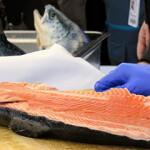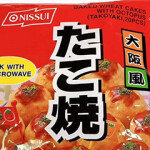ASEAN bloc replaces Russia as China’s top seafood supplier
Russia has been displaced by the Association of Southeast Asian Nations (ASEAN) as China’s top supplier of seafood imports.
The ASEAN bloc accounted for 14.5 percent of China’s imports, with volume rising 31.3 percent to 453,700 MT, with a value of USD 1.116 billion (EUR 978 million) – up a whopping 59.2 percent, albeit from a low base in 2017. Simultaneously, China’s exports to ASEAN have fallen. This appears to confirm trends tracked by SeafoodSource showing supply of lower-value species like pangasius as well as premium items like shrimp are both increasing, with pangasius becoming a key import for the Chinese foodservice industry.
Long China’s top supplier by dint of its huge shipments of cod for processing, Russia accounted for 13.86 percent of China’s imports in the first half of the year, with 640,900 metric tons (MT) worth USD 1.11 billion (EUR 973 million), down 4.8 percent and up 24.71 percent, respectively. This suggests that more of Russia’s volume-based exports like cod are being processed at home – a long-stated Russian government goal – while shipments of premium products like king crab are increasing.
Meanwhile, despite the Sino-U.S. trade tensions, the U.S. seems to have had a pretty good first half in 2018, with its shipments to China rising 30.2 percent in value to USD 852 million (EUR 746.9 million) and 2.4 percent in volume to 254,000 MT.
This year’s figures represent an acceleration of trends that have been gathering momentum over the last several years. Chinese imports continue to increase at a faster pace than exports, with the government’s tighter enforcement of its fishing moratoriums and environmental regulations also driving the demand for imports.
In the first half of 2017, Russia accounted for 15.4 percent of China’s overall seafood imports. It sold 620,100 MT worth USD 785 million (EUR 688.1 million) – increases of 16.8 percent and 13.2 percent respectively, over the same period last year. ASEAN accounted for 12.26 percent of China’s imports in the first half of 2017, totaling 289,000 MT worth USD 625 million (EUR 547.9 million) – down five percent in volume and up 0.93 percent in value, respectively.
China’s appetite for global supply means its trade surplus fell by USD 1.019 billion (EUR 892.5 million) to USD 4.34 billion (EUR 3.80 billion).
China’s overall export and import figure for the first half of 2018, at 5.19 million MT, was down by 1.6 percent but at USD 20.3 billion (EUR 17.8 billion), the value of the trade rose by 15 percent, suggesting seafood exports and imports are becoming more expensive as supply tightens and China’s demand grows.
There are also signs that China’s shipments of lightly processed “general exports” (i.e. not product imported for processing and reexport) fell 2.39 percent in volume terms to 1.66 million MT while rising 7.59 percent in value terms to USD 9.2 billion (EUR 8.1 billion). This category represented 70.9 percent of China’s seafood exports in volume terms and 74.4 percent in value terms in the January to July period. Key species in this category are cephalopods, tilapia, and Pacific mackerel.
China’s top export category, cephalopods, accounted for 23.4 percent of “general export” shipments in value terms, hitting 324,500 MT worth USD 2.15 billion (EUR 1.88 billion) – up 11.83 percent and 16.3 percent, respectively. Japan’s purchases of cephalopods from China in the period rose 11.83 percent in volume and 16.3 percent in value.
Shrimp ranked second behind cephalopods, constituting 11 percent of exports. But China’s shrimp imports were flat year-on-year at 79,700 MT, valued at USD 1.01 billion (EUR 884.7 million).
Tilapia volumes were up 9.81 percent to 239,600 MT worth USD 735 million (EUR 643.8 million), with year-on-year value rising 11.4 percent. Eels, accounting for 7.6 percent of total shipments, or 28,500 MT shipped, were worth almost as much as tilapia exports, at USD 705 million (EUR 617.6 million).
The numbers reveal a big fall-off in shellfish exports. At 7.26 percent of overall exports, shipments fell 11.16 percent in volume to 125,700 MT worth USD 669 million (EUR 586.1 million), down 7.4 percent in value. Shipments of Pacific mackerel were also down from a very high base for the same period in 2017, dropping 29.5 percent in volume to 154,300 MT worth USD 314 million (EUR 275.1 million).
The processing business remains largely flat, at 24.04 percent of overall exports. While volume decreased 3.13 percent year-on-year to 577,000 MT, the value of the sector’s exports rose 4.68 percent to USD 29.72 billion (EUR 26.04 billion). Of that figure, contract processing accounted for 100,500 MT, down 3.29 percent in volume but up 5.92 percent in value terms year-on-year to USD 692 million (EUR 606.3 million). The rest of the figure is comprised of seafood purchased by processors for reexport – that figure fell 3.10 percent in volume and rose 4.31 percent in value.
Japan has re-established itself as China’s top export market. Though Japan’s total volume of purchases was down 4.07 percent to 357,000 MT, the value of its seafood purchases from China were worth USD 2.35 billion (EUR 2.06 billion), up 5.63 percent. The U.S. was second behind Japan, buying 292,900 MT worth USD 1.77 billion (EUR 1.55 billion), up 1.48 percent.
China also registered a marked drop off in shipments to the ASEAN bloc, despite efforts by China through its “One Belt, One Road” blueprint to increase exports to the region. Even though China has targeted the region’s consumers, China’s seafood shipments to ASEAN nations were down 14.6 percent in volume to 327,100 MT and down 2.67 percent in value to USD 1.55 billon (EUR 1.36 billion). That means China’s shipments to the ASEAN were lower value than its sales to the U.S.
China’s shipments to the key markets of Malaysia and Indonesia were down 24 percent and 22 percent, respectively, in volume terms. However, China recouped some of its lost sales in those countries by increases its sales to the E.U. Its shipments to the E.U. rose 5.28 percent in volume to 310,020 MT worth USD 1.39 billion (EUR 1.22 billion), up 12.24 percent year-on-year.
However, compared with the U.S. or even the ASEAN bloc, the E.U. market doesn’t appear so lucrative, and this is a space where processed product dominates. This data clearly makes the U.S. a much more lucrative market.
What’s also clear from all the data is that while volumes are being squeezed, there is a noticeable overall rise in the price of seafood. The expected continued increase in Chinese demand is likely to continue to send up prices paid by end-users across the globe.
Photo courtesy of Anniepics






Share